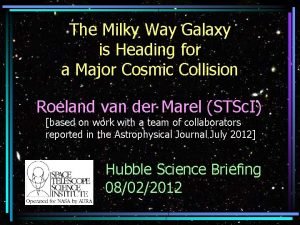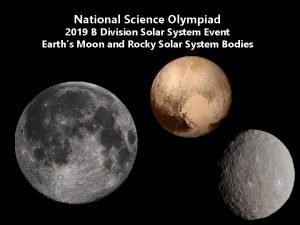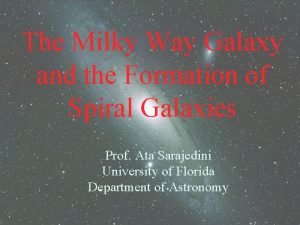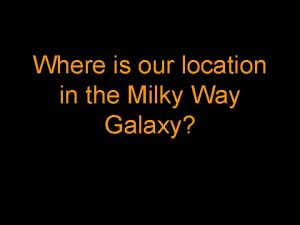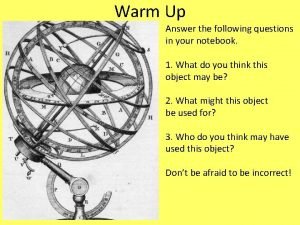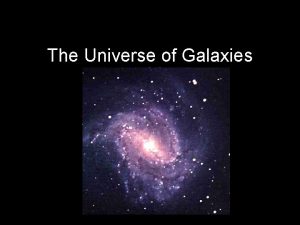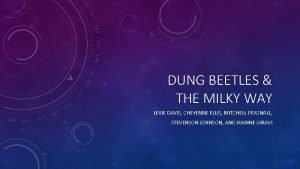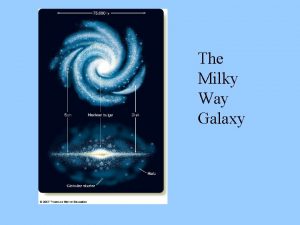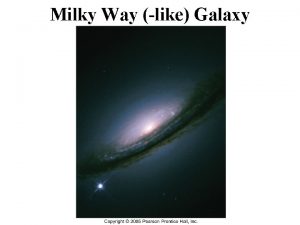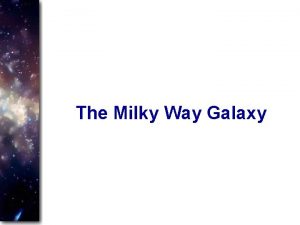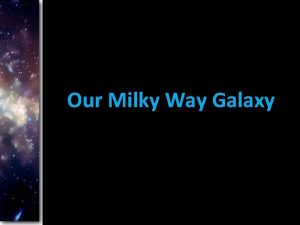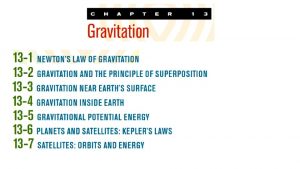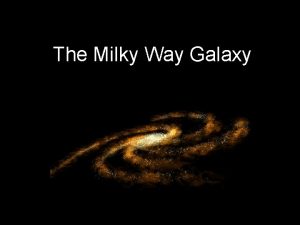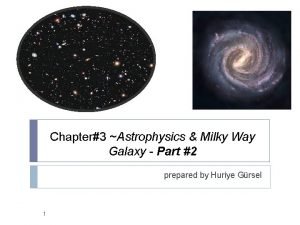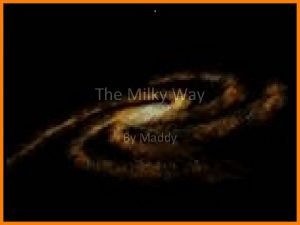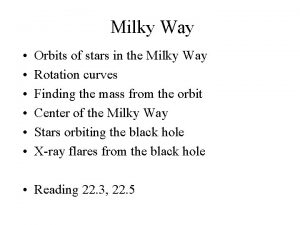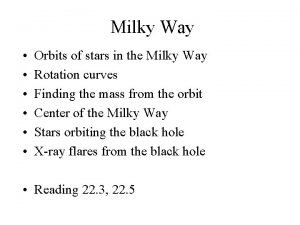MILKY WAY GALAXY We are part of the













- Slides: 13


MILKY WAY GALAXY � We are part of the Milky Way Galaxy, which is made up of roughly 100 billion stars. � Galaxies are formed when gravity causes a large, slowly spinning cloud of gases, dust, and stars to contract.

HOW MANY GALAXIES ARE IN THE UNIVERSE? � Used to believe there was only 1 galaxy � Nebula: a cloud of gas and dust � 1925: Hubble thought he was looking at a nebula, but realized it was actually a huge collection of starts � now known as the Andromeda Galaxy � our nearest neighbouring galaxy � Astronomers estimate that the whole universe contains at least 125 billion galaxies


GALAXY SHAPES 1. Spiral Galaxies � viewed from above: looks like a pinwheel with long “arms” spiralling out from the core � viewed from the side: looks like a paper plate with an orange at its centre � central bulge made up of stars � the circling disk is made up of gas, dust, and newly forming stars � “halo”: the glow surrounding the galaxy

Example: the Milky Way � Earth is located in one of the spiral arms, towards the centre � Can see the galaxy at night

2. Elliptical Galaxies � Ranges in shape from a perfect sphere to a stretched-out ellipse � Ex. like a cigar or a football � Contain some of the universe’s oldest stars � Over half of all galaxies are elliptical


3. Irregular Galaxy � No regular shapes such as spiral arms or a central bulge � Made up of both newly forming stars and old stars


ADDITIONAL DIFFERENCES BETWEEN GALAXIES � Galaxies differ in size, mass, colour, brightness, and speed of spin. These differences are determined by the number of stars, types of stars, and the amount/type of gas and dust making up a galaxy. � Supergiants: extremely large galaxies � Dwarfs: relatively small galaxies � The more spin a galaxy has, the flatter it will be

� Star clusters: distinct formations of stars � There are 2 types of star clusters: �Globular Clusters: composed of as many as 1 million stars and held together by mutual gravity in a spherical shape �Open Clusters: contain anywhere from a few hundred to a few tens of thousands of stars


